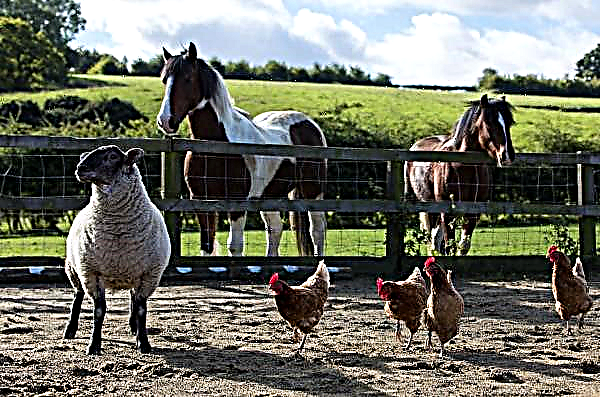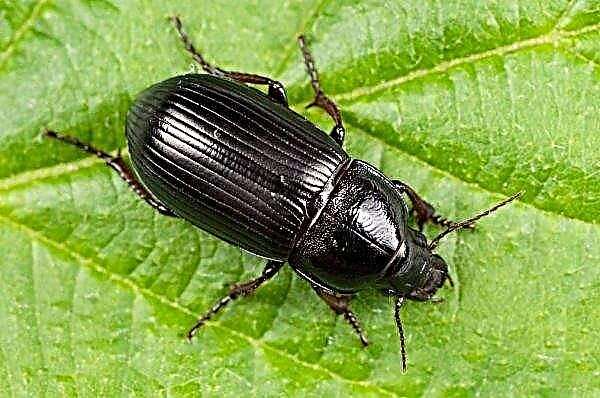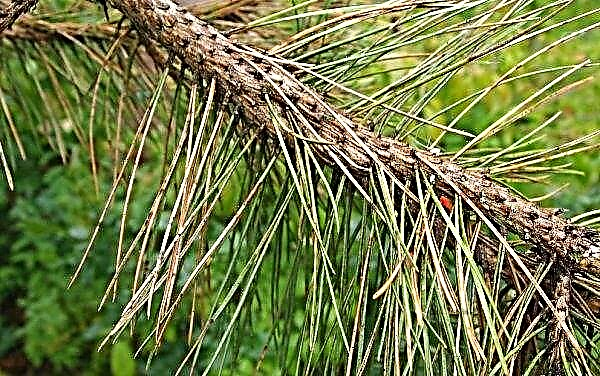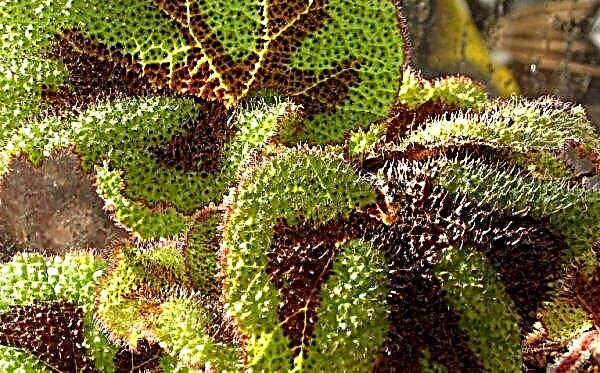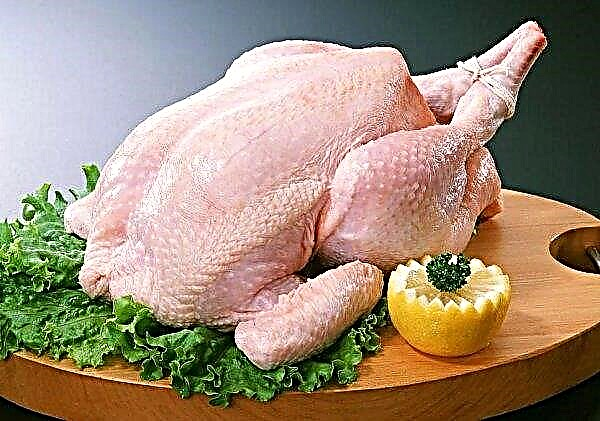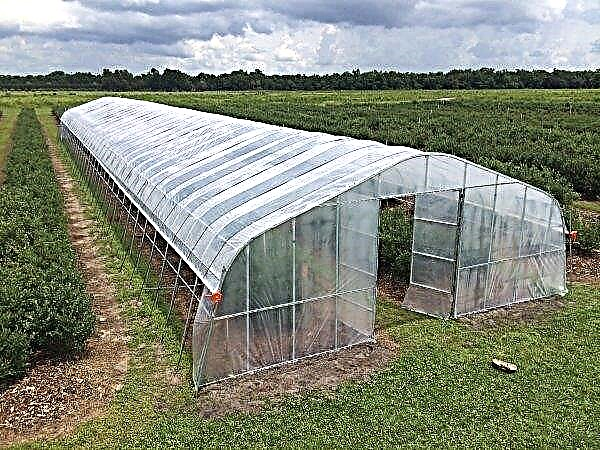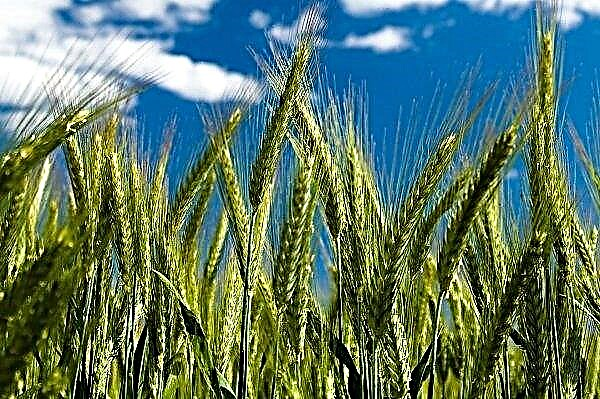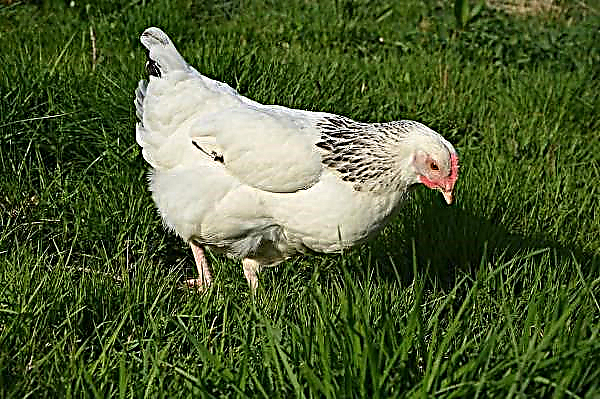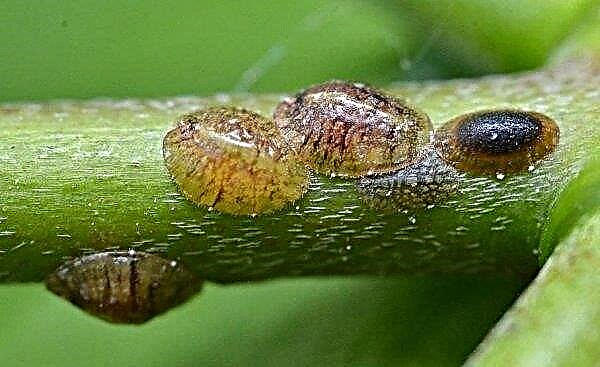Pine - one of the oldest representatives of the plant world on the planet. Today, the diversity of the Pine family is great, but, unfortunately, some species are on the verge of extinction, such as Pitsunda pine. This powerful coniferous tree often becomes a subject of cutting down during the organization of new recreational zones and the laying of routes. Artificial landings become a salvation, especially since a culture can be propagated even under conditions of private home ownership, unless, of course, the size of the plot allows.
Botanical tree description
Pitsunda pine - a beautiful evergreen coniferous tree that reaches a height of up to 30 m in its life. It should be noted the rapid growth rate of the culture - depending on the conditions, pine grows 30–40 cm per year. The straight trunk is covered with a gray-brownish bark with cracks. The tree has long needles, reaching 15 cm, they are wide, soft, light green in color.
The first fruits - cones, appear on a pine tree only at the age of 20. They are directed upwards and attached to powerful brown-red shoots with short legs. The color of the cones is brown with a reddish tint, they have an ovoid-conical shape, reach a length of 10 cm. After a year, the cones open on the cones. The crown of the tree changes shape with age. In young specimens, it is conical, and in adults, it is sprawling.
The main habitat of Pitsunda pine is Abkhazia, it can also be found in the North-West Transcaucasia (Anapa-Gelendzhik district), on the Black Sea coast of Crimea (Balaklava, Sudak), in Dagomys, Tuapse, in the Doobsky tract near the village. Kabardinka at Cape Doob.
In Russia, the total area occupied by this representative of the flora is about 12 thousand hectares.. The relict plant grows well on rocks and on clay slopes. Also, the tree can be found near roads and highways, in park areas where it is planted artificially, thereby increasing the number, because the tree is listed in the Red Book of Russia as an endangered species.
Origin of name
The name of the pine tree comes from the city of Pitsunda, located in Abkhazia. Here is the world's largest pine grove, which surrounds the village on three sides. The reserve area is 200 hectares. Here you can meet adult representatives of Pitsunda pine, whose age is over 100 years.
Did you know? During archaeological excavations, the remains of Pitsunda pine related to the preglacial period were found.
Landing
Before considering the pine planting algorithm, it should be noted that it belongs to heat-loving plants and develops well only in conditions when the average daily temperature in the summer does not drop below + 25 ° С. Otherwise, the tree will hurt, so it is advisable to plant it in the southern regions. The tree propagates by seeds or seedlings.
Seed
Growing a pine from a seed is a painstaking but interesting undertaking. The material can be collected directly in the places where the trees grow. To do this, cones are collected in early spring or autumn and placed near heating appliances for several days. When the forest material dries, it will open, and it will be possible to extract the seeds. If there is no way to do the collection yourself, the seed can be purchased in the nursery.
Next, proceed with the preparation and landing:
- Dip the seeds in a container with water for 4 days, after this period, place them in a weak solution of potassium permanganate for another day.
- Prepare a container with a soil composition from a mixture of peat and sod land. Equip the bottom with holes that are necessary for air exchange and drainage of excess moisture.
- Immerse the seeds in the soil to a depth of not more than 30 mm, water well and cover with a film, thus organizing a mini-greenhouse.
- Place the container in a warm, well-lit place. Moisturize the soil daily. After the first shoots appear, and the shell leaves them, the film needs to be removed.
- In addition to watering, young seedlings need to be fed periodically. It is better to use drugs that combine growth stimulants, amino acids, vitamins (for example, "Radifarm").
- When the sprouts reach a 10-centimeter height, they are transplanted into large containers.
- Cultivation continues until the plants reach a half-meter height, after which they can be transplanted into the open ground.
Video: How to grow pine from a cone
Seedlings
Since the process of pine propagation by seeds at home is rather laborious, many people prefer to buy ready-made seedlings. Material is bought in specialized nurseries. Moreover, it is desirable that they be grown in the same climatic conditions in which they will have to grow further. For example, a seedling grown in the Krasnodar nursery may not take root in the Saratov region. Volga region.
For planting pine in the middle lane it is better to buy material bred in the Moscow region or nursery The seedling needs to be inspected - to make sure that there are no dried and damaged areas on it. Landing is carried out in spring and autumn. In the spring, it is better to do this in May, and in the autumn in September.Important! The first month after planting, the pine tree needs regular watering. They need to be carried out once a week, spending about 10 liters of water.

To plant a seedling, follow the following sequence of measures:
- Choose a suitable area that will be well lit. If landing is planned near a fence or structure, the distance to them should be at least 3 m.
- Dig a landing hole with a depth of 50-60 cm and the same diameter.
- Using broken brick, crushed stone or expanded clay, lay a drainage layer up to 10 cm thick on the bottom of the pit.
- Prepare a nutritious soil composition. Although Pitsunda pine in the natural environment is not very demanding on the soil, it is better to fertilize it with artificial planting so that the tree takes root and is less sick. To do this, mix turf soil with humus and sand in a ratio of 2: 2: 1 for one landing. Since the plant prefers light, water-permeable soils, heavy dense soil can be destroyed by vermiculite. The prepared composition is poured over the drainage layer.
- Make a depression in the middle of the pit with the soil and place a seedling in it, taking into account that the root neck should be located slightly above ground level.
- Fill the pit with the remaining soil composition and compact well.
- Make a small indentation around the trunk and water the landing. For one copy you need to spend up to 10 liters of water. If during watering the water absorbs very quickly into the ground, the procedure can be repeated.
- Cover the ground near the trunk circle with mulch using peat or chernozem. Such a technique will save moisture for a long time, and also protect the young roots of the plant from overheating when planting in the spring or from freezing if the procedure is carried out in the fall.

Pine care
Caring for a Pitsunda pine does not cause much trouble. Most of all, the plant requires attention in the first months after planting, after which the activities are reduced to watering, periodic top dressing and pruning. You should also know what diseases and pests can threaten the pine, and how to deal with them.
Watering and feeding
Young pine trees are watered as necessary, making sure that the soil does not dry out. In hot weather, you need to do this once every 2 weeks, delivering 10-15 liters of water to each tree. Sprinkling, which improves the condition of branches, needles and prevents insect attacks, is also useful. Adult specimens completely dispense with watering, withstanding even prolonged drought.
In the first months after planting, young pines need fertilizing with fertilizers and substances that stimulate the growth of the root system. A good tool is the drug "Megafol", which accelerates growth, improves the protective functions of trees, provides the necessary nutrition with vitamins and minerals. Later, in spring and autumn, root dressings are introduced with complex mineral compositions. One of the effective drugs is Bona Forte. It is diluted in water at the rate of 80 g of the drug per 12 l and watered the soil around the trunk. In this case, you need to try so that the solution does not fall on the needles.
It is also useful to process the pine directly on the crown. For this, you can use such effective drugs as Brexil Combi or Quantum. These funds can be diluted with insecticides and fungicides and thereby carry out prophylaxis against diseases and pests simultaneously with top dressing.
Loosening and mulching
In spring and summer, you must definitely loosen the soil around the trunk to a depth of about 10 cm. This helps to get rid of weeds, to make the soil more moisture- and breathable. In early spring, such an event helps to break down the dense earth layers that formed after wintering. It is advisable to combine loosening with watering or to carry out the procedure after rain. After loosening, the soil is mulched. In autumn, this must be done using humus or peat. The mulch layer should be approximately 10 cm.
Pruning
Periodically, sanitary pruning is necessary - 3 procedures per season are sufficient. The first pruning is carried out in the spring, before the sap flow begins. Remove all damaged, dried shoots. It is better to use a sharp secateurs for these purposes. If the sections of the slices are large - treat with a disinfectant, for example, garden var. The second pruning is carried out in the summer, and the third in the fall, when preparing the pine for wintering.
Important! Young pines can freeze in winter, so at the end of October they are covered with insulation material.
Possible diseases and pests
Of the pests that can cause significant harm to plants, for pine the most dangerous are scale insects and sawflies. You can fight the first with the help of the “Akarin” preparation. A solution is made from it, diluting 30 g of the product in 10 l of water, and spraying is carried out. The biopreparation “Lepidocide” or the chemical compounds “Actellik”, “Confidor” help to get rid of the sawfly.
In addition to insect pests, fungal diseases, such as shute, rust, pine spawn, are dangerous. For treatment, treatments using copper-containing preparations (“Hom”), Bordeaux liquid, etc.
Useful properties of a tree
Pitsunda pine has majestic rare beauty, but, in addition, it is also famous for its healing properties. Its long needles in the sunlight emit a large number of volatile products - substances that cleanse the air. It is especially useful to stay in pine plantations on the seashore, when the salty air in conjunction with aromatic compounds secreted by trees create a healing atmosphere, useful in diseases of the respiratory tract.
Did you know? Pitsunda pine wood has excellent strength and durability, which is why it is used in shipbuilding for lining ships.
All parts of the plant are used in folk medicine - they make medicinal decoctions, teas and tincturesthat treat colds, cardiovascular diseases, gastrointestinal diseases and are good diuretics.
From the cones of Pitsunda pine a delicious and healthy jam is prepared. Product It has anti-inflammatory effect in bronchitis, pneumonia, stomatitis, has an expectorant property. Jam helps fill the lack of vitamin C in the body, strengthening immunity and thereby reducing the likelihood of colds and viral diseases.
Use in landscape design
Pitsunda pine is used for landscaping in coastal cities, creating majestic landscape pictures and a unique microclimate. As for the garden plots, it must be taken into account that the tree reaches very large sizes in adulthood. Accordingly, its landing is allowed only in spacious areas where a wide crown will not create unwanted dimming to other cultures.
The unusual appearance of an adult pine tree with its curved branches and uneven spreading crown is suitable for any landscape composition. Since no flowering and fruit crops can be planted near the tree, it is possible to equip a rockery or a recreation area here, thereby saving the remaining space on the site. Plants such as fern, hosts will give cosiness, primrose and begonias growing in flowerpots can be arranged.
However, it should be borne in mind that pine roots grow over time, so it is not recommended to plant it in close proximity to buildings, since a powerful root system can destroy the foundation. Growing Pitsunda pine requires some time and effort, but in the end gives a positive result. The tree will give not only fragrant healthy air, but also a lot of pleasant emotions, delivering aesthetic pleasure and endowing with powerful positive energy.

